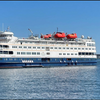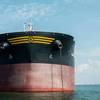Investment in Design: Wärtsilä Italian Style
By David Tinsley
Trieste engine plant enters new era Skilful management has been core to the shaping of the huge Trieste engine building factory as a pivotal element in Finnish-owned Wärtsilä Corporation's production network. As the one-time Grandi Motori Trieste(GMT) works, a symbol of Italian industrialization in the 1970s, the factory has been the subject of far-reaching organizational change since the Finns took charge. It has emerged as a much leaner, increasingly efficient builder of marine diesels. Cessation of engine production at other Wärtsilä plants in recent years has imbued Trieste with additional manufacturing responsibilities, and its strengthened role as a European supplier to the international market has assumed greater significance in the light of the continuing shift of global shipbuilding and marine production activity to the orient. Under the latest stage of restructure at Wärtsilä, Trieste is now one of only two European engine building centers maintained by the Finnish group. Furthermore, the plant's focus is now entirely on medium-speed engines, following the decision to leave Sulzer two-stroke diesel production wholly in the hands of licensees.
Although global engine production is expected to attain new heights in 2005 and 2006, in line with projected, record commercial shipbuilding output, Wärtsilä's concentration of engine manufacture on just two factories, Vaasa in Finland and the Trieste works, reflects a bid to achieve greater balance in matching its supply capacity to market demand for its products over the long term.
Wärtsilä's decision to end manufacturing at Turku, one of its two Finnish plants, and the discontinuation of high-speed engine building at Mulhouse, France, followed earlier production closures in France and Sweden and the cessation of operations at the modern Zwolle works in the Netherlands. Turku was due to close on January 1, 2005, bringing wholesale production of the popular Wärtsilä 46-series medium-speed diesel and derivatives into the province of the Trieste factory.
The Italian factory's production remit also includes the industry's largest and most potent medium-speed diesel, the Wärtsilä 64, along with the 26- and 38-series types, earlier transferred from Zwolle, and the 50DF dual-fuel engine, derived from the 46. In keeping with customer demand, the Sulzer-originated ZA40S medium-speed design remains in the portfolio, although the group is promoting more modern, similar-bore Wärtsilä models where possible for future projects involving ZA40S devotees.
The factory has previously acted as a back-up manufacturing facility to Turku for the Wärtsilä 46, during a time of peak demand, a factor which will undoubtedly assist its uptake of wholesale production of the Finnish 460mm-bore design and various derivatives. The new addition to the family, the significantly more powerful, 46F common-rail engine, will give added dimension to production in the coming years.
Wärtsilä's recent success in landing a contract for 50DF dual-fuel engines as the prime movers for BP's four diesel-electric LNG carrier newbuilds in South Korea will impact on the Trieste program in 2006. The north-east Italian factory's deliveries of 50DF plant for consecutive, diesel-electric LNG carriers laid down for Gaz de France at Chantiers de l'Atlantique will accordingly be followed by shipsets of two 12-cylinder and two 9-cylinder 50DF engines for each of BP's 155,000-cu.-m. gas tankers entrusted to Hyundai Heavy Industries and Hyundai Samho.
Although the capacity for producing Sulzer RTA and RT-flex low-speed engines will be retained, Wärtsilä has decided to relinquish Trieste's role in this sector, given the cost-attractive, volume possibilities offered by eastern Asian licensees in the main regions of two-stroke engine shipbuilding consumption. Wärtsilä Italia in Trieste had been the Finnish corporation's only self-owned maker of Sulzer two-stroke diesels, and had demonstrated its prowess by turning out the first RT-flex electronically-controlled, common-rail two-stroke engines in 2002.
Wärtsilä's financial interest in the Trieste works dates from 1997, with the formation of Wärtsilä NSD Corporation, when it had assumed a 40-percent stake in what was then the Fincantieri subsidiary Grandi Motori Trieste. The Finnish group's 1999 purchase of Fincantieri's 60-percent holding gave it outright ownership of the plant and associated companies in Italy. The change in productivity and output over the past seven years has been dramatic. This has derived mainly from improvements in organizational measures and manufacturing methodology, and the adoption of 'best practices' honed in the Wärtsilä production network, along with equipment transfers from other factories and selective investments. A major reduction in the payroll has been achieved without confrontation and disruption, although pay-offs and early retirements have been accompanied by a substantial intake of new blood, which has also had the effect of markedly reducing the average age of personnel. At the same time, greater recourse has been made to subcontracting.
Output has risen from 274 MW in 1997 to 632 MW in 2003, with a further advance this year to an anticipated level in the order of 850-900 MW. The payroll has gone in the opposite direction over the same period. In 1996, immediately prior to Wärtsilä's involvement, the workforce had numbered approximately 1,900. By 2003, the payroll had come down to 1,090. The near 1,200 pay-offs during the period have been accompanied by an intake of 412 newcomers, dramatically altering the age profile and leading to a younger average age.
The physical dimensions of the Trieste works and the capacity of its production lines and assembly areas are complemented by an enormous testbed resource, which encompasses provision for the test running of eight large engines plus eight small engines. The facilities can handle the 64-class engine up to its present largest size, the 12-cylinder vee model, and could also receive a 20-cylinder model of the 46-type, although the latter series only appears in the maker's current catalogue in configurations of up to 18 cylinders. Two of the testbeds are equipped to provide gas fuel, and a third will be similarly-fitted during 2005.
Production in 2004 included the roll-out in February of what may prove to be the last two-stroke from Trieste, a seven-cylinder Sulzer RTA72U machine. However, the overall growth in activity during the year included the rapid assimilation of 46-series manufacture, with a total of 19 such engines figuring in the program.
Wärtsilä Italia's throughput targets for Trieste include hoisting output on the combined 46- and 64-series production line from one engine per week, the level attained in October 2004, to two per week, plus or minus 25 percent, by the end of 2005. With similar 25-percent margins, build capability for the Wärtsilä 38-class was one engine per week from October 2004, with the production rate for the 26-series standing at two per week from mid-year.














